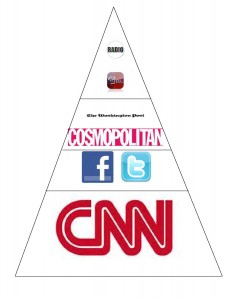Do employers really look at Facebook?
Posted in comm361, karinaschultheis, mashable, personalblog, studentblog on Feb 21st, 2012
My father has been telling me for years that anything I put online will be there forever, and I need to be cognizant of the image I am projecting. He used to frequently search for me on Google — and let me know that he was doing it, as well as what he found. Once we became friends on Facebook, his comments became more frequent.
There’s a picture of you from 2009 at a party. It looks like the party was the kind that had alcohol. What do you think people think when they look at that?! They know your birthday! They can do the math!
I had to admit, he was right. In the crazy, collective world of the internet, people can tag you in photos that aren’t even on your profile. I was not too concerned, because nothing on my profile was too revealing or obscene. But I began thinking twice about even taking pictures, with his voice in the back of my head: “What do you think people think?!”
Every once in awhile I’ll get a call from him about comments other people put on my profile.
Peanut, profanity is disrespectful. You should tell him not to leave **** like that on your page.
The irony of that statement is not lost on me, by the way — but perhaps that’s the point.
My father was in the Navy for years and can have a bit of a potty-mouth sometimes. But he does not put those statements into the World Wide Web.
The conundrum of what is acceptable to say online becomes more important when you are a college student beginning your job search. There have been reports for years that employers check people’s Facebook pages before beginning the hiring process. But is this really true? And if so, does what they see really affect whether or not they’ll give you an interview?
According to an article by Mashable‘s Todd Wasserman, the answer to that question is yes. A recent study between three universities suggested that reviewing somebody’s Facebook page can accurately predict not only their GPA but also their future job performance. The researchers subjectively evaluated potential employees on five personality traits:
- Openness
- Conscientiousness
- Extraversion
- Agreeableness
- Neuroticism
My father was not completely right, however (but don’t tell him I said that). Wasserman states that in many cases photos of applicants drinking or partying will not disqualify them from a potential job. He also clarifies that more research needs to be done on this subject.
But still, companies are looking.
When you are job searching, you wouldn’t show up to an interview late or dressed unprofessionally. You want to make a good first impression.
So consider this: What if your Facebook profile is your first impression? Is there anything on it you wouldn’t want your boss to see?
If so…it’s probably best to remove it from your profile.
